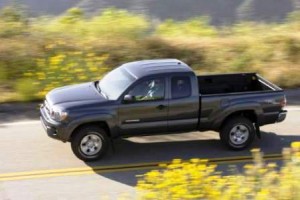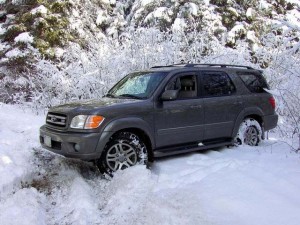
Toyota agreed to a $3.4 billion settlement to cover corrosion issues with about 1.5 million trucks and SUVs, including some Tacomas.
Toyota quietly reached a settlement late last month that will cost it about $3.4 billion to cover complaints of excess corrosion involving a mix of large trucks and SUVs.
All told about 1.5 million Toyota Tundra and Tacoma pickups and Sequoia SUVs will be covered by the settlement in the U.S. Owners sued because the trucks lacked adequate rust protection that could cause breakage of the frame and other components. In some cases, parts would fall off while the vehicles were being driven.
“We want our customers to have a great ownership experience, so we are pleased to resolve this litigation in a way that benefits them and demonstrates that we stand behind the quality and reliability of our vehicles,” Toyota said in a statement.
The settlement covers full-size Toyota Tundras produced from 2007 and 2008, smaller Tacomas made between 2005 and 2010, and Sequoia SUVs produced from 2005 to 2008. According to the original class action lawsuit, those models were not given adequate rust protection.
(Toyota tumbles; operating profits fall. Click Here for the story.)
While the automaker did not admit to any liability or wrongdoing, the settlement, which was reached on Oct. 31, will require Toyota to inspect the covered vehicles for 12 years from the day they were first sold or leased. If necessary, frames will be replaced at the company’s expense. Owners who previously paid for such repairs will now be reimbursed.
The agreement estimated that the value of each frame is about $15,000. That would work out to just short of $3.4 billion were all eventually replaced. The inspection program will cost an estimated $60 a vehicle, or $90 million overall. Plaintiffs’ attorneys will receive an additional $10 million.
Toyota has also agreed to advertise the settlement and reach out to owners. As to other recalls involving older vehicles, it could prove difficult to find some, especially for the older models involved in the recall.
(Still number one. But can Corolla maintain its lead as it marks its 50th anniversary? Click Here for more.)
Once an endemic industry problem, corrosion has become less of a headache for owners and manufacturers in recent years, largely thanks to new steel and iron alloys and steps such as e-coating metal prior to the paint process.
But the issue hasn’t vanished entirely, especially when it comes to components that are subject to especially intensive wear and exposure to rain, snow and salt. Just this past year, Hyundai, Nissan, Mazda and Mitsubishi were among manufacturers who had to order recalls on a wide range of passenger cars and light trucks. The Mazda problem involved 2.2 million vehicles worldwide.
Kia, in June, recalled about 220,000 Sedona minivans for rust issues involving their hood latches and suspension. The Korean carmaker had ordered an identical recall for those products three years earlier.
(Long skeptical Toyota set to reverse course, launch long-range EVs. Click Here for that breaking story.)
Toyota, meanwhile, has had a number of rust-related recalls. The Tacoma was also subjected to a service action in 2014 to repair 690,000 Tacoma pickups because excess corrosion could cause their leaf springs to snap unexpectedly.

